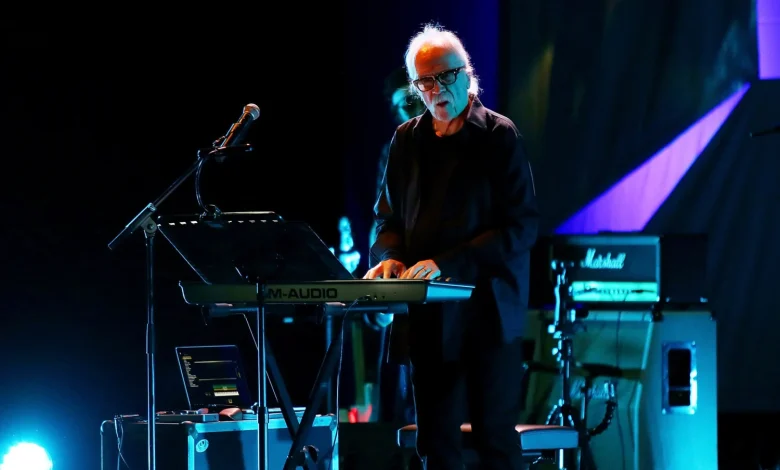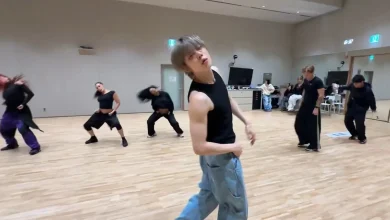Legendary Horror Guru John Carpenter Makes Beautiful Music In DTLA

John Carpenter. His name is synonymous with horror, Halloween, and films that define modern horror cinema. And just like one of his leading ladies, Jamie Lee Curtis, the director, writer, producer, and composer is enjoying his second act.
Aside from his 1978 breakout classic Halloween and the franchise that followed, his long list of cult favorites include The Thing, The Fog, Christine and In the Mouth of Madness, as well as Assault on Precinct 13, Escape from New York and Escape from L.A., the Oscar-nominated Starman, Big Trouble in Little China, Village of the Damned, Vampires, Memoirs of an Invisible Man, Ghosts of Mars and The Ward.
It wasn’t just the director’s glee for gore that created the signature suspense in his films, but also the music, which Carpenter composed for most of his movies. He will be joined by his son Cody Carpenter (whose mother is science fiction sex kitten Adrienne Barbeau) and godson Daniel Davies (son of Kinks guitarist Dave Davies) at the Belasco theater in DTLA for the John Carpenter Live concert.
The event will feature music from his classic films performed in front of a huge screen with clips from some of those scenes, as well as new material from the group’s album Lost Themes IV: Noir on Friday, Oct. 24, and Saturday, Oct. 25; plus Halloween night, Oct. 31; and Saturday, Nov. 1.
As a composer and recording artist, he has created Lost Themes, three widely acclaimed albums of non-soundtrack music, as well as two albums called Anthology that include his film music. Carpenter, with his wife Sandy King, has also created Storm King Comics, a popular line of comic books and graphic novels.
Film director and composer John Carpenter performs with scenes from the movie “Village of the Damned” playing in Las Vegas (Gabe Ginsberg/Getty Images)
I came to California to learn how to make movies,” Carpenter tells LA Weekly from his home in the hills near the Hollywood sign. “We had no money and made student films. So what do you do? You either use existing music and drop it into your student film, which sounds terrible and just doesn’t fit, or you make the music yourself. So that’s what I did. That’s how it started. It was actually a self-defense mechanism for me, because in my early feature work, I had no money. It was the same story, so I decided again to do the music myself. Finally, with enough features under my belt, it just became a part of the creative process of my movies.”
Both his interest in music and the macabre started at an early age. Carpenter’s father was a music professor who bought his eight-year-old son a violin.
“My father influenced me hugely,” says Carpenter, who began making short horror films with an 8 mm camera before he even started high school. “At the time, I wasn’t particularly aware of it, but I grew up with music all around me in the house. My father made a bad decision when I was eight, and he forced me to start learning the violin. I had no talent for it and didn’t want to do it. It’s the hardest instrument to master, and I did not sound good on it. But still, I got a foothold in music and went to keyboards, learned the guitar, and picked up various instruments on the way. I played in a cover band back in high school and the early days of college, and we made a few bucks playing at fraternity parties. Animal House, the movie? Very accurately, that was my life.”
Carpenter, who was born in the film noir era, attributes his penchant for panic to the golden age of horror and science fiction he grew up in and the film that inspired him the most, Forbidden Planet.
(L-R) Kurt Russell, Keith David, and John Carpenter have a chat at the ceremony honoring Carpenter with a star on the Hollywood Walk of Fame in April. (Michael Tullberg/Getty Images)
“Horror hasn’t really changed since the beginning of movies; it’s always the same, it just keeps getting reinvented with every generation,” says Carpenter, whose favorite current filmmakers are Jordan Peele and Guillermo del Toro, and can’t wait to see the new Frankenstein film.
“You had the early stuff, like the universal horror movies, and then came new directors and writers who reinvent horror for their generation, it’s more graphic,” he says. “Then there was a while where it was all about torture, but it’s all the same. There are two stories we tell in horror – the evil outside that’s all around us, “The Other, or Them”. The second story is the evil within us. The classic there is Dr. Jekyll and Mr. Hyde. It’s a harder story to tell. The Wolf Man is another classic. He’s accidentally bitten by a werewolf and becomes a monster just by walking through the woods. You can see a reflection of humanity there. The external evil is easier to deal with. We can rally ourselves to that and stand up and fight. But when evil is inside us, it’s rough.”
What’s easy is the family music dynamic Carpenter shares with his group, making music.
“I’m really happy being me right now doing what I’m doing,” he says. “There are a lot of projects in the works, like a TV series and a new album coming out next year that’s going to be very different for us. A director has a horrible amount of stress. You carry all this money responsibility, which accumulates every day, people are funding the movie, always looking over your shoulder, not necessarily with kind eyes. It’s a tough gig. I’m having such a good time doing music. Don’t let anybody tell you there’s no second act in Hollywood.”
Jamie Lee Curtis holds a knife in a scene from the film ‘Halloween’, 1978. (Photo by Compass International Pictures/Getty Images)





